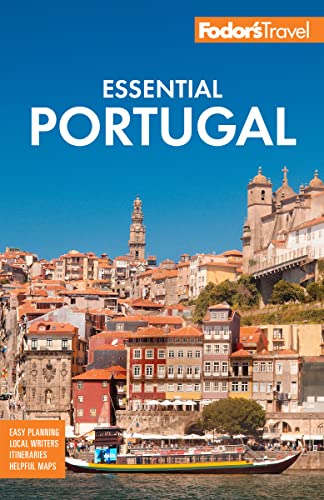Car
Many main national highways (labeled "N" with a number) have been upgraded to toll-free, two-lane roads, identified with "IP" (Itinerario Principal) and a number; highways of mainly regional importance have been upgraded to IC (Itinerario Complementar). Roads labeled with "E" and a number are routes that connect with the Spanish network.
Commercially operated autoestradas (toll roads with two or more lanes in either direction identified with an "A" and a number) link larger cities with Lisbon, circumventing congested urban centers. The A6 via Évora links Lisbon with Portugal's eastern border with Spain at Badajoz (from which the highway leads to Madrid).
Autoestrada tolls are steep, costing, for example, €22.55 between Lisbon and Porto, but time saved by traveling these roads usually makes them worthwhile. Minor roads are often poor and winding, with unpredictable surfaces.
Heading out of Lisbon, there's good, fast access to Setúbal and to Évora and other Alentejo towns, although rush-hour traffic on the Ponte 25 de Abril across the Tagus River can be frustrating. An alternative is taking the 17-km-long (11-mile-long) Ponte Vasco da Gama (Europe’s longest bridge) across the Tejo estuary to Montijo; you can then link up with southbound and eastbound roads.
Some highways in Portugal—including the east-west A22 in the Algarve—now use electronic tolls only, with no method of payment accepted on the roads themselves. To avoid getting fined for not paying the tolls, if you rent a car in Portugal, make sure the rental car company installs an electronic device that adds the costs of the tolls to your final bill.
Car Rentals
To rent a car in Portugal you must be a minimum of 21 years old (with at least one year’s driving experience) and a maximum of 75 years old and have held your driving license for over a year. Some car-rental companies may require you to have an International Driving Permit (IDP), which can be used only in conjunction with a valid driver's license and which translates your license into 10 languages.
Red tape–wise, your driver's license from home is recognized in Portugal. However, you should learn the international road-sign system (charts are available to members of most automobile associations).
Rules of the Road
Driving is on the right. The speed limit on the autoestrada is 120 kph (74 mph); on other roads, it's 90 kph (56 mph), and in built-up areas, 50 kph (30 mph).
At the junction of two roads of equal size, traffic coming from the right has priority. Vehicles already in a traffic circle have priority over those entering it from any point. The use of seat belts is obligatory. Horns shouldn't be used in built-up areas, and you should always carry your driver's license, proof of car insurance, a reflective red warning triangle, and EU-approved reflective jacket for use in a breakdown.
Children under 12 years old must ride in the back seat in age-appropriate restraining devices (facing backwards for children under 18 months). Motorcyclists and their passengers must wear helmets, and motorcycles must have their headlights on day and night.




